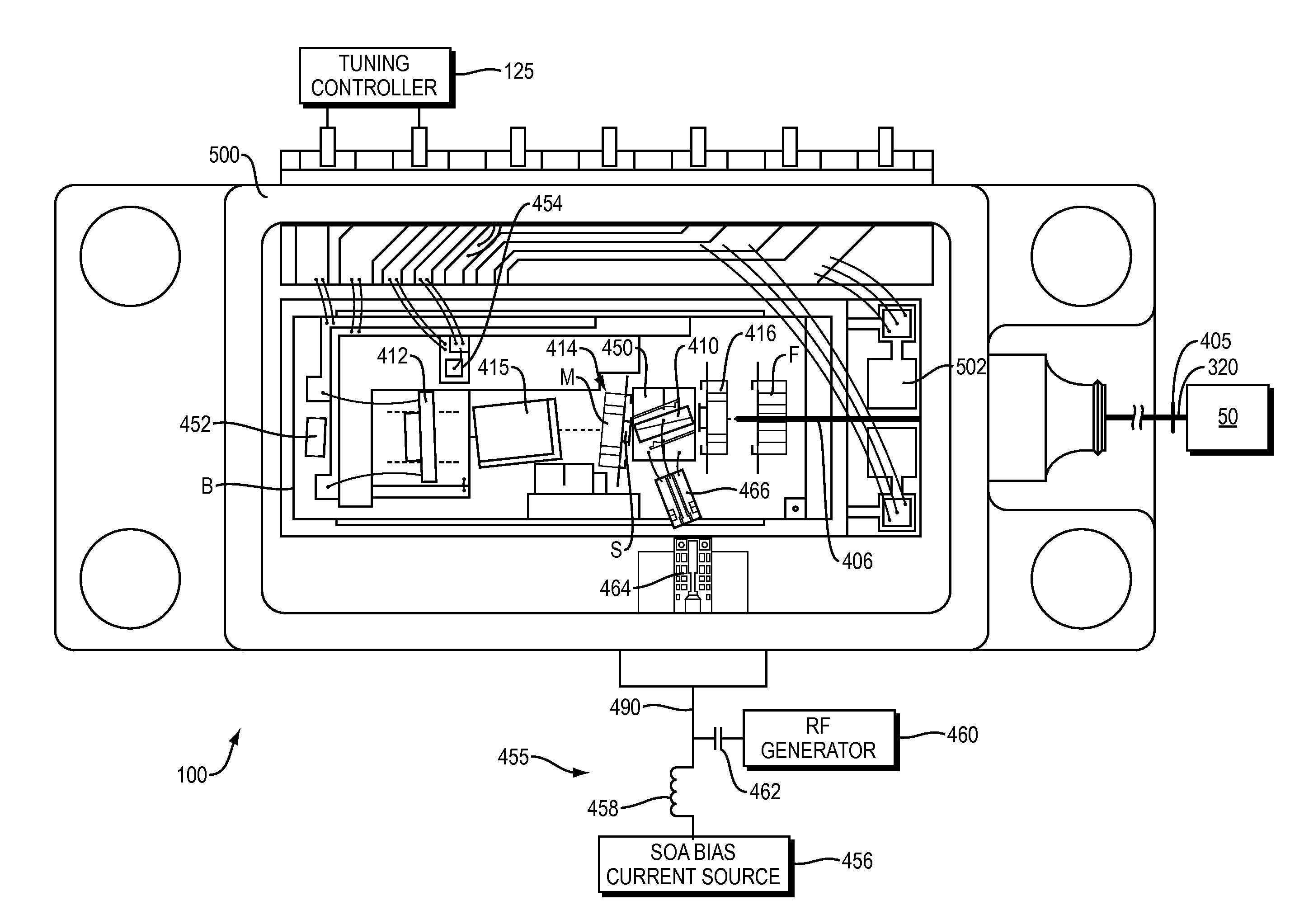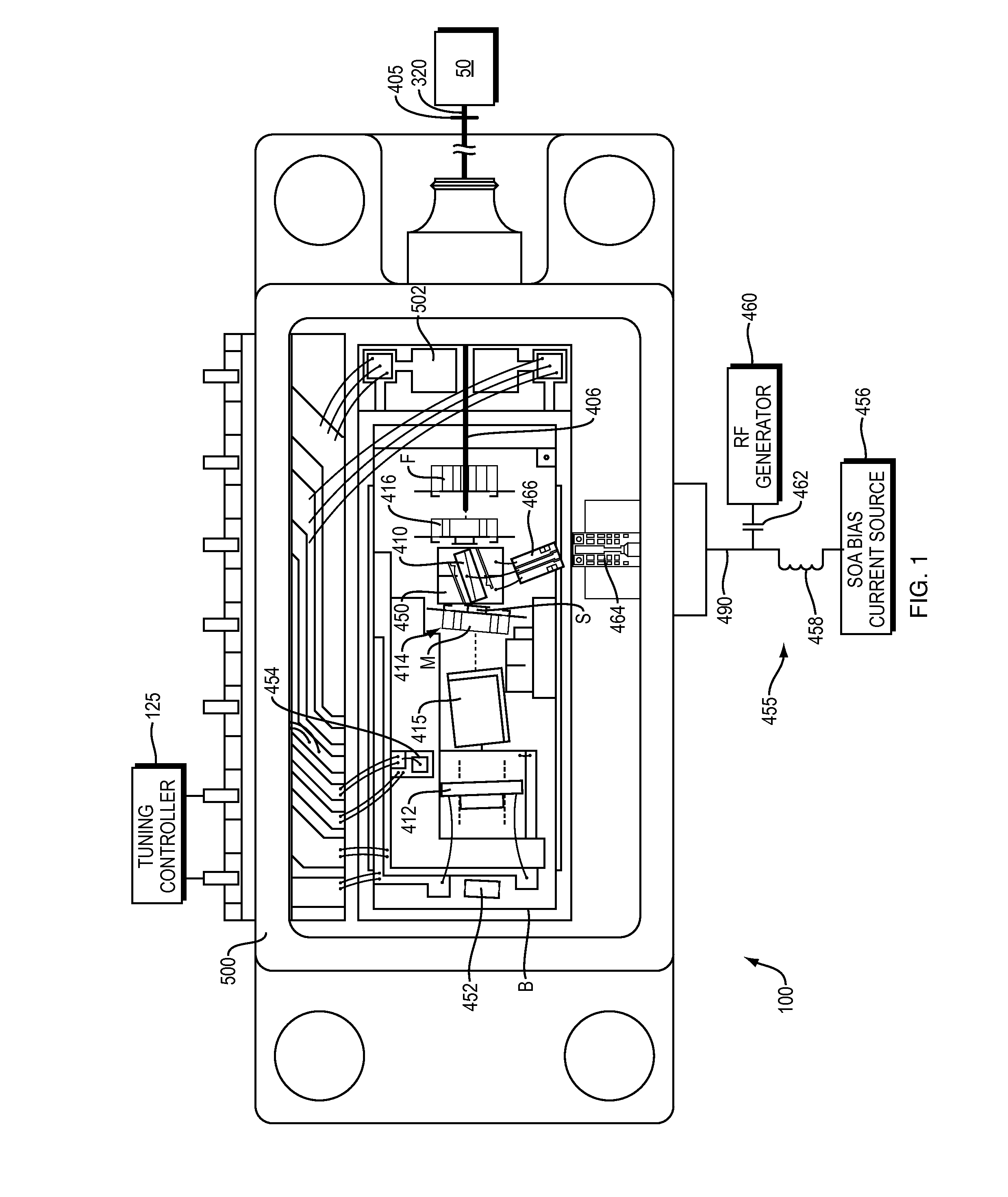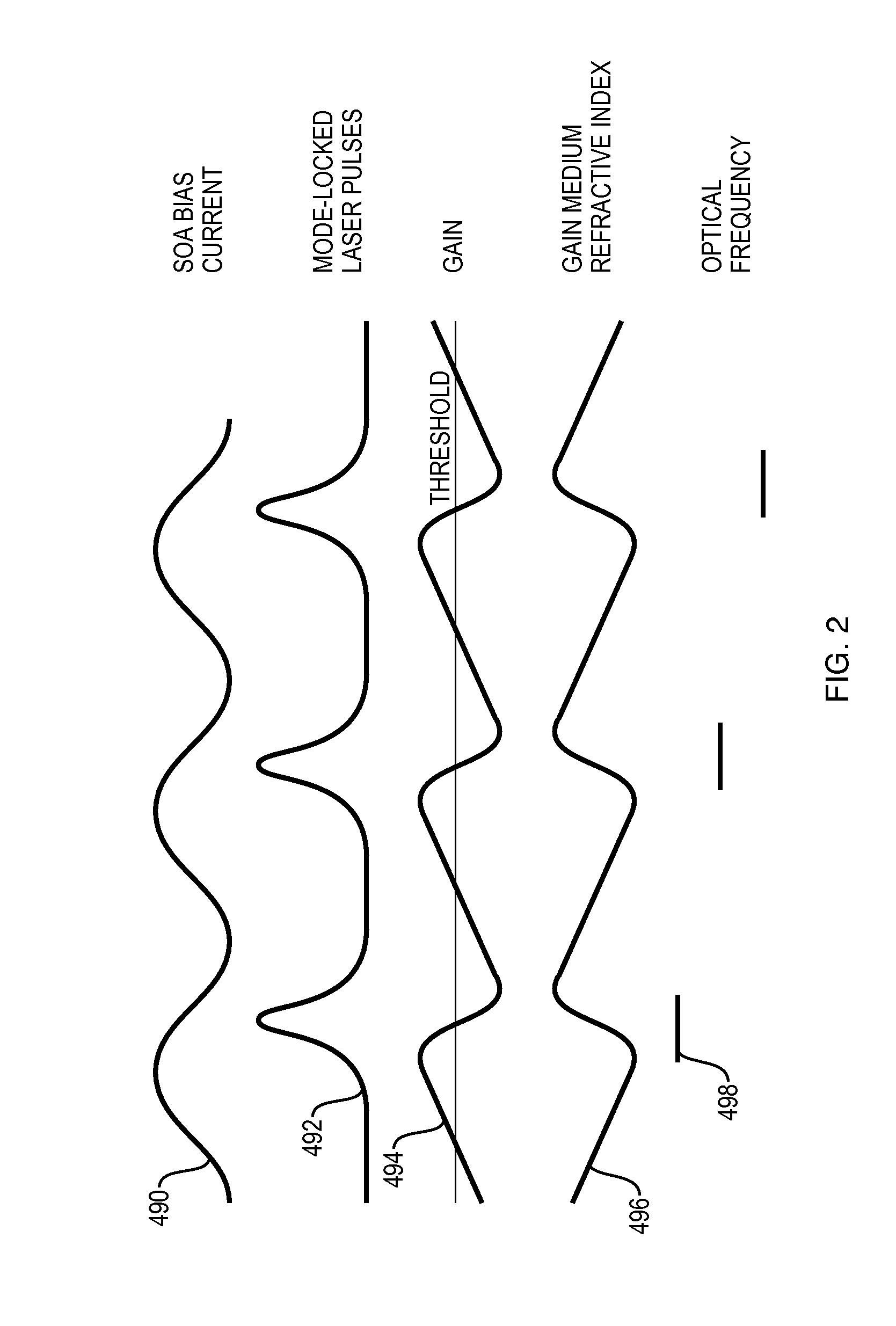Laser Swept Source with Controlled Mode Locking for OCT Medical Imaging
a technology of controlled mode and swept source, which is applied in the field of laser swept source with controlled mode locking for oct medical imaging, can solve the problems of lasers that cannot produce light at integer multiples of cavity modes, can only design certain tradeoffs, and can be problematic for oct systems, so as to facilitate high-speed tuning and facilitate the effect of tuning
- Summary
- Abstract
- Description
- Claims
- Application Information
AI Technical Summary
Benefits of technology
Problems solved by technology
Method used
Image
Examples
Embodiment Construction
[0045]FIG. 1 shows mode-locked laser swept source 100 for optical coherence analysis, which has been constructed according to the principles of the present invention. This embodiment controls or stabilizes the mode-locked operation by modulating the bias current to an intracavity gain element.
[0046]In the current embodiment, the laser swept source 100 is preferably a laser as generally described in incorporated U.S. Pat. No. 7,415,049 B1. It includes a linear cavity with a gain element 410 and a frequency tuning element 412. In the illustrated example, the frequency tuning element is a Fabry-Perot filter, which defines one end of the cavity, in the illustrated implementation.
[0047]In other embodiments, other cavity configurations are used such as ring cavities. Further other cavity tuning elements are used such as gratings and thin-film filters. These elements can also be located entirely within the cavity such as an angle isolated Fabry-Perot tunable filter or grating.
[0048]Current...
PUM
 Login to View More
Login to View More Abstract
Description
Claims
Application Information
 Login to View More
Login to View More - R&D
- Intellectual Property
- Life Sciences
- Materials
- Tech Scout
- Unparalleled Data Quality
- Higher Quality Content
- 60% Fewer Hallucinations
Browse by: Latest US Patents, China's latest patents, Technical Efficacy Thesaurus, Application Domain, Technology Topic, Popular Technical Reports.
© 2025 PatSnap. All rights reserved.Legal|Privacy policy|Modern Slavery Act Transparency Statement|Sitemap|About US| Contact US: help@patsnap.com



